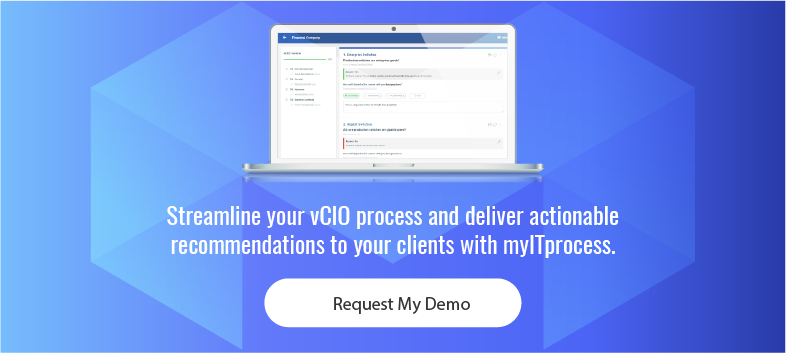Have you recently taken a step back to ask yourself: “What am I doing to deliberately demonstrate the value that I work so hard to deliver to customers?” In the MSP world, “we don’t hear from them much” is simply not an acceptable way to explain an overall client relationship.
Of course, it’s excellent when we are able to explain the reactive nature of the relationship that way. However, there needs to be pre-scheduled, proactive cycles around reviewing technology and communicating the potential ramifications of outdated policies, procedures, and practices.Clients need to hear from us!
This has always been our claim at TruMethods, as there has always been risk (and opportunity) in technical misalignments. With that said, the risk factors have exponentially increased with the current cybersecurity landscape and it is the MSP’s responsibility to tie all the risks they know about back to their client’s business needs. The key point to be made here is “risks they know about.” We don’t know what we don’t know until we do, right? That’s why proactive Technology Alignment is so crucial!
The two highest value delivery areas (in terms of client perception) in the TruMethods framework are Technology Alignment and vCIO. For any MSP, these functions are central to the results that we look to achieve in terms of operational efficiency and strategic relationship management. They are also the key to deliberately demonstrating value to clients on a long-term basis, and if done right, can even help the client become better educated on how technology can impact their overall business goals.
Here are some suggestions that can assist in demonstrating value to clients:
- Technology Alignment:
- Pre-schedule alignment reviews (6-12 months in advance) and be sure there’s a calendar invite sent promptly that includes the technical point of contact
- Set an agenda for the review, include a pre-review and post-review check with a point of contact to begin and end the proactive engagement
- Make your presence known: If on-site, take a little bit of time to talk with end users. If remote, use Slack, Teams, or email to notify end users about the review and offer technical tips & tricks.This is not meant to collect reactive issues, but could be an opportunity to train end users on how to submit tickets if they experience any issues.
- Virtual CIO:
- Pre-schedule Technology Steering meetings (6-12 months in advance) and send out agendas ahead of time to give the client a chance to suggest edits
- Conductunique touchesin between scheduled vCIO Technology Steering meetings so that the owner/C-Level contact understands how the proactive process continues outside of the larger strategic meetings
- Periodically take a moment to point out progress: Alignment score improvements, impactful changes to their KPI’s, lower ticket noise translating to better end-user efficiency
- Translate any technical jargon into language the Owner/C-Level contact can understand, and keep it as simple as possible. After all, this isthe essence of vCIO, isn’t it? Making IT seem less overwhelming and tying it back to what will improve business outcomes directly demonstrates value.
Spoiler alert:This is an inherent side effect of properly implementing and/or maintaining your Technology Success practice. Please be sure to reach out to the TruMethods team if we need to make some adjustments or put more discipline around the process… it’s what we do!
Take in all of the information in this blog post and also think of this: What are other ways you are able to demonstrate value to clients while navigating technical and business relationships?


